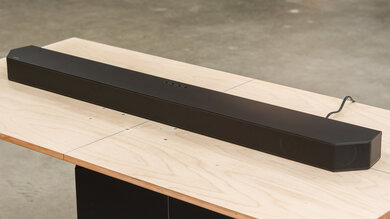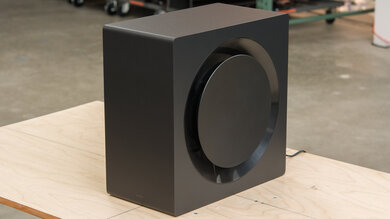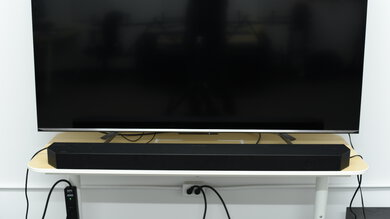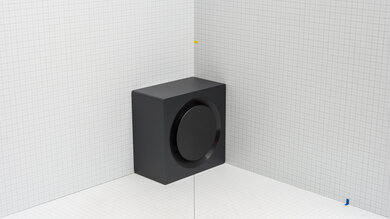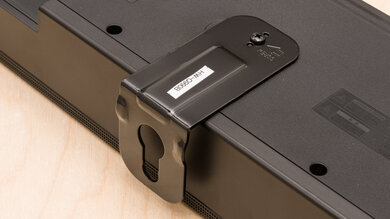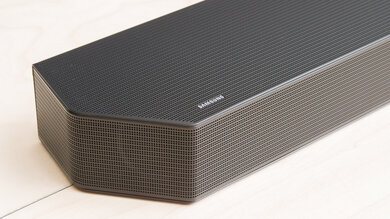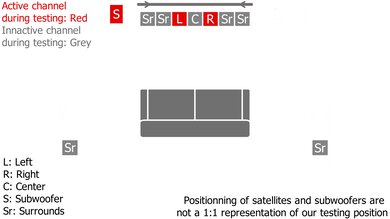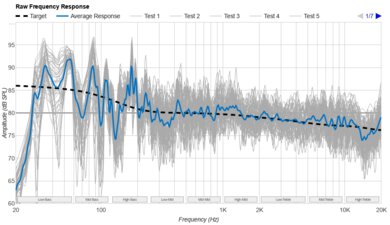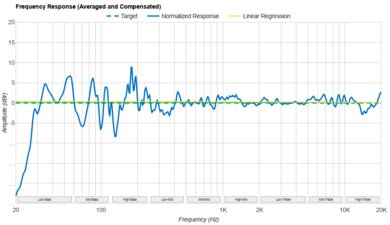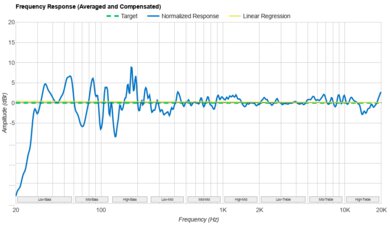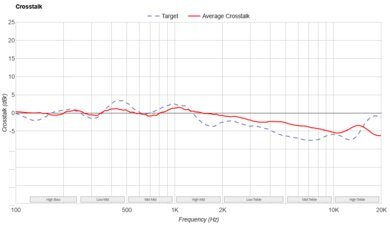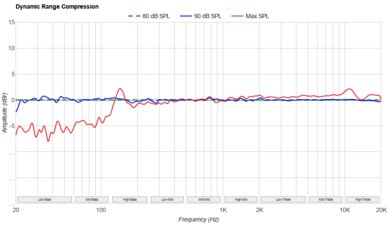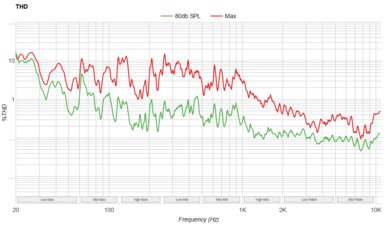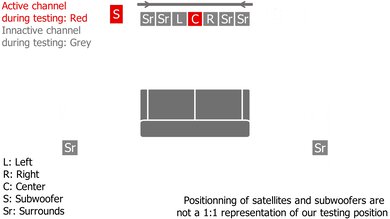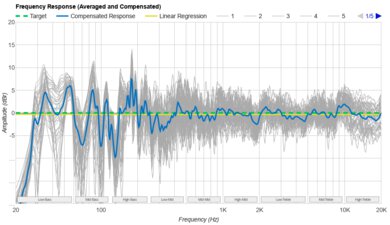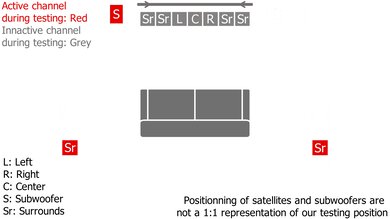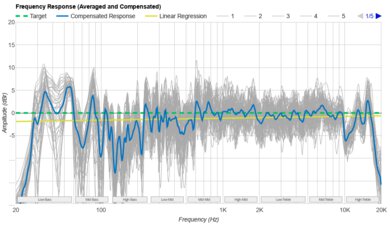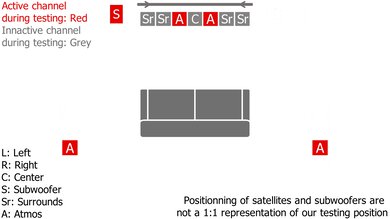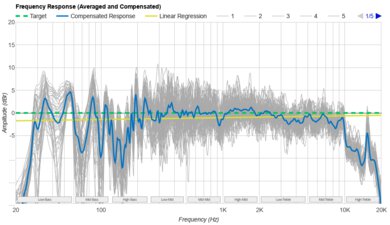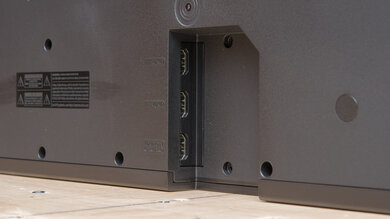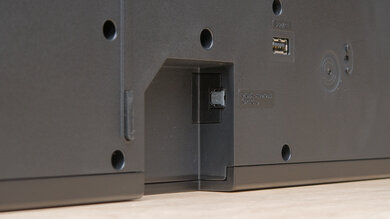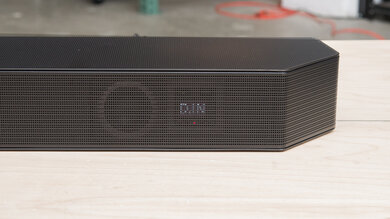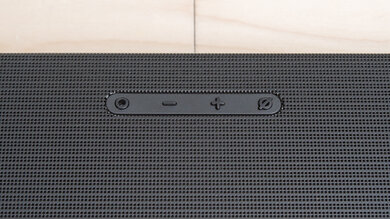The Klipsch Cinema 800 is a 3.1 setup released in 2021. The manufacturer also sells compatible rear satellites, which you can add on separately to improve its surround sound performance. Overall, this soundbar offers very similar performance to the Klipsch Cinema 700, though it has a slightly different design, with more visible plastic horns on each end of the bar. Unlike the Klipsch Cinema 600, this bar supports Dolby Atmos content, though it has to downmix it to stereo to play it back.
Note: The results in this review represent the third model we purchased from the manufacturer. For the first bar we tested, the tweeter blew during our stereo dynamics sweeps, though this won't affect most users since these tests are designed to stress the bar. For the second model we purchased, sound played out of the sub but not out of the bar, meaning we couldn't test it.
Our Verdict
The Klipsch Cinema 800 is great for mixed usage. While it isn't the most premium-looking soundbar on the market, the Klipsch offers a versatile performance that can please many different types of listeners. Dialogue in movies and TV shows is clearly reproduced, and voices and instruments in your favorite tunes are present and detailed, too. Its sub brings out the low rumble in the bass, which is great for bass-heavy music as well as action-packed movies. However, it does downmix audio formats like Dolby Atmos into stereo, which doesn't provide a very immersive feel.
- Graphic EQ and presets.
- Extended low-bass.
- Adjustable dialogue enhancement feature.
- No room correction.
The Klipsch Cinema 800 is excellent for dialogue-heavy content like TV shows or podcasts. Since it's a 3.1 setup, it has a discrete center channel, which is designed specifically to improve vocal reproduction. Dialogue is reproduced with clarity, making it easy to follow, and its unique 'Dialogue' preset lets you cycle between three different volume levels for voices in the mix.
- Adjustable dialogue enhancement feature.
- Night mode.
- Bluetooth, Wi-Fi, and Chromecast built-in support.
- Not compatible with Apple AirPlay.
The Klipsch Cinema 800 is great for music. Out of the box, it provides a balanced sound that reproduces voices and other lead instruments with accuracy and detail. Plus, its dedicated sub brings lots of thump and rumble in the bass, great for bringing genres like EDM and hip-hop to life. There's no room correction feature, so it does sound a little different depending on the room you're in, but you can always use its graphic EQ to make up for this a bit.
- Graphic EQ and presets.
- Extended low-bass.
- No room correction.
The Klipsch Cinema 800 is good for movies. Dialogue is easy to follow, and its sub brings out the rumble in action-packed scenes, much like at the movie theater. This bar can playback many of the audio formats that are commonly found on both streaming platforms and Blu-rays, including Dolby Digital and Dolby Atmos. However, since it's a 3.1 setup, it has to downmix this content into stereo to play it, which takes away from the overall immersive feel.
- Graphic EQ and presets.
- Extended low-bass.
- No room correction.
Changelog
- Updated Jun 19, 2023: Following TBU 1.2, added more information to the Audio Format Support: ARC/eARC, Audio Format Support: HDMI In, and Audio Format Support: Optical boxes.
- Updated Jun 19, 2023: Converted to Test Bench 1.2. Updated the results for audio format support via ARC/eARC, HDMI In, and Optical. Added Video Passthrough to TV results as well.
- Updated Mar 01, 2023: Added cable lengths to In The Box.
- Updated Mar 01, 2023: Converted to Test Bench 1.1. With this update, we've added a Mounting test and added information aboutSubwoofer Output, Spotify Connect, and Microphone Mute.
Check Price
Differences Between Sizes And Variants
This soundbar is available in Black, and you can see the label for the model we tested here.
If you come across another version of this soundbar, let us know in the discussions, and we'll update our review.
Popular Soundbar Comparisons
The Klipsch 800 is a simple 3.1 setup. Its build quality isn't the most impressive, and it has to downmix surround content into stereo to play it. However, out of the box, it offers a neutral sound profile suitable for many different types of audio content. Unlike many other 3.1 setups, it can even play Atmos content.
See our recommendations for the best soundbars, the best Dolby Atmos soundbars, and the best soundbars with a subwoofer.
The Klipsch Cinema 800 is better than the Klipsch Bar 48. The Cinema 800 supports Dolby Atmos content, unlike the Bar 48. The Cinema 800 also has a better soundstage and a more neutral sound profile out-of-the-box. However, the Bar 48 is better built.
The Bose Smart Soundbar 900 with Speakers + Bass Module is better than the Klipsch Cinema 800. The Bose is a better built 5.1.2 setup with discrete satellites. It has much better soundstage, surround, and Atmos performances. There are more sound enhancement features, including room correction. However, unlike the Klipsch, it doesn't have a Full HDMI In port for 4k passthrough.
The Samsung HW-Q800A is better than the Klipsch Cinema 800. The Samsung is a better built 3.1.2 setup with a better Atmos performance. Unlike the Klipsch, it also has built-in voice assistant capabilities and DTS support.
The Klipsch Cinema 800 is better for mixed usage than the Sonos Beam (Gen 2). The Klipsch is a 3.1 setup with a dedicated subwoofer that can reproduce a more extended low-bass. It also gets louder with less compression at max volume. However, if you prefer a smaller standalone bar, the Sonos is still a great choice. It's a better-built 5.0 setup with better soundstage, surround, and Atmos performances.
Test Results


